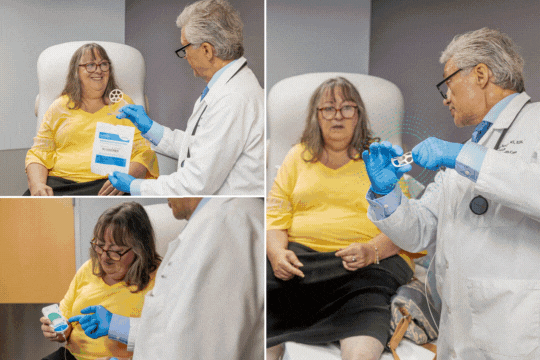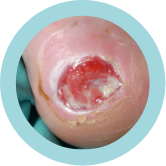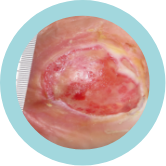
Get moving toward faster wound healing with

Because life shouldn’t have to stop for wound care.
Designed for patients who need advanced wound healing


Select an icon
Find out more about the benefits of NATROX® O2
It’s easy to see why patients give NATROX® O₂
90% satisfaction scores1

How can NATROX® O₂ help my wounds heal?
Oxygen helps heal wounds
Oxygen is critical to healing. But when a wound has low levels of oxygen, the healing process can stop. Evidence shows adding topical oxygen to a wound can help kickstart and improve healing.
Uses the natural healing properties of oxygen
NATROX® O₂ sends oxygen directly to the wound surface. Patients wear it 24/7 non-stop so the wound can get the oxygen it needs to support healing. NATROX® O₂ is intended for use on complex, slow healing, or non-healing wounds.
Clinically proven to heal chronic wounds
Many studies show greater healing using NATROX® O₂. In fact, recent studies show a 71% greater chance of healing using NATROX® O₂ topical oxygen therapy5. Treatment is typically 8 – 12 weeks.
Designed to empower patients to
live their normal life during challenging wound treatment.
Life keeps moving, and so should you.
Easy to use to get advanced wound care results
Patients can even apply it from home.


Is NATROX® O₂ right for you?
Consult with your clinical team to ask if NATROX® O₂ could help heal your wound.


Reference List
References
[1] Jones, N.C., G; Ivins, N.M.; Harding, K.G et al. (2017) The role of topical oxygen therapy in the treatment of diabetic foot ulceration. Poster in Wounds UK Harrogate, UK.
[2] Kauffman, H., et al, 2021. Topical oxygen therapy used to improve wound healing in a large retrospective study of wounds of mixed aetiology. Wounds International 2021, 12(2):62-68.
[3] Serena, T., 2020. Topical oxygen therapy has a role in wound care specialists’ armamentarium. iWoundsnews [online] 14 Dec 2020. Available at: https://bit.ly/iwounds2020 [Accesses 14 Oct 2021].
[4] Kaufman, H., et al (2018) Topical oxygen therapy stimulated healing in difficult, chronic wounds: a tertiary experience. J Wound Care 27(7), 426-433.
[5] Serena TE, Bullock NM, Cole W et al. Topical oxygen therapy in the treatment of diabetic foot ulcers: a multicentre, open, randomised controlled trial. J Wound Care 2021; 30: Suppl.5 S7-14.




